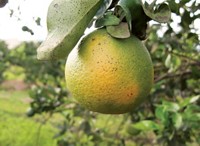Advertisement
Grab your lab coat. Let's get started
Welcome!
Welcome!
Create an account below to get 6 C&EN articles per month, receive newsletters and more - all free.
It seems this is your first time logging in online. Please enter the following information to continue.
As an ACS member you automatically get access to this site. All we need is few more details to create your reading experience.
Not you? Sign in with a different account.
Not you? Sign in with a different account.
ERROR 1
ERROR 1
ERROR 2
ERROR 2
ERROR 2
ERROR 2
ERROR 2
Password and Confirm password must match.
If you have an ACS member number, please enter it here so we can link this account to your membership. (optional)
ERROR 2
ACS values your privacy. By submitting your information, you are gaining access to C&EN and subscribing to our weekly newsletter. We use the information you provide to make your reading experience better, and we will never sell your data to third party members.
Pesticides
EPA finds more risks for the pesticide dicamba
Drifting herbicide may harm wildlife in addition to nontarget plants, agency says
by Britt E. Erickson
August 28, 2022
| A version of this story appeared in
Volume 100, Issue 30
The herbicide dicamba, known for volatilizing and wreaking havoc on plants it was not intended to target, also poses risks to bees, birds, fish, and mammals, the US Environmental Protection Agency finds in a draft ecological assessment released Aug. 18. But the biggest risk remains spray drift and volatilization for nontarget terrestrial plants, the agency says.

The EPA and state agencies have received numerous complaints about dicamba damaging nontarget plants since late 2016, when the EPA allowed the herbicide to be sprayed on genetically modified soybeans and cotton. Environmental groups sued the agency to halt the approval and won. In June 2020, federal appeals court ordered the EPA to cancel all registrations for use on dicamba-tolerant crops.
In October 2020, under then-president Donald J. Trump, the EPA issued new registrations with additional controls intended to prevent the herbicide from volatilizing and drifting onto neighboring properties. But the measures did little to stop the complaints about harm to nearby crops, plants, and trees.
“The [EPA] admits once again that dicamba has caused thousands of damaging drift episodes, and that attempts to mitigate that damage have failed to stem the harm,” Bill Freese, science director at the Center for Food Safety, says in a statement. The center is one of the plaintiffs that challenged the EPA’s 2016 approval of dicamba for use on genetically modified crops. The group is also suing over the agency’s 2020 dicamba registrations.
The EPA is reevaluating the risks of dicamba as part of a pesticide review process that occurs every 15 years. That review includes assessing uses of dicamba on crops genetically modified to tolerate the herbicide—called over-the-top applications—and other uses that generally occur before plants emerge.
Spraying dicamba over the top of crops after they have emerged is typically done later in the growing season, when temperatures are hotter. The herbicide is more likely to volatilize from target plants and drift in hot temperatures.
“The EPA’s findings confirm dicamba’s widespread harms to plants and animals, particularly in over-the-top applications, and raise grave concerns about the ecological damage caused by the Trump administration’s 11th hour approval of this dangerous pesticide,” Nathan Donley, environmental health science director at the Center for Biological Diversity, says in an emailed statement. “The science is clear, and the EPA needs to act with urgency to rein in these uses to protect people and wildlife from this drift-prone poison,” he says.
The agency is accepting comments on the draft ecological assessment and a human health assessment until Oct. 17. It expects to propose an interim decision regarding the reregistration of dicamba in 2023.





Join the conversation
Contact the reporter
Submit a Letter to the Editor for publication
Engage with us on Twitter